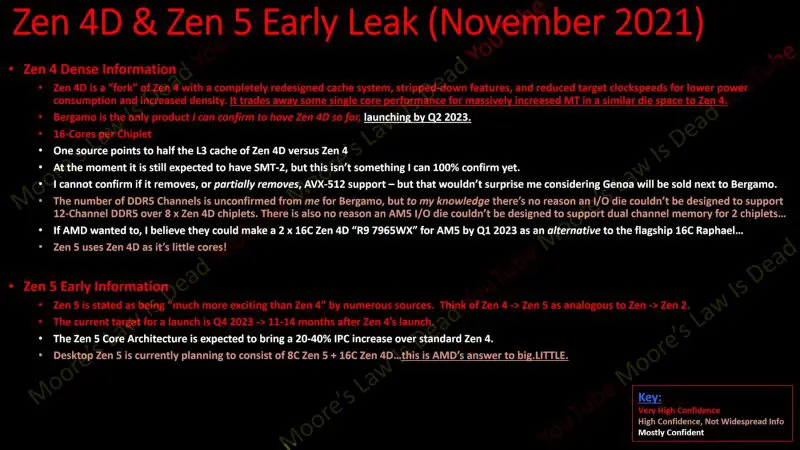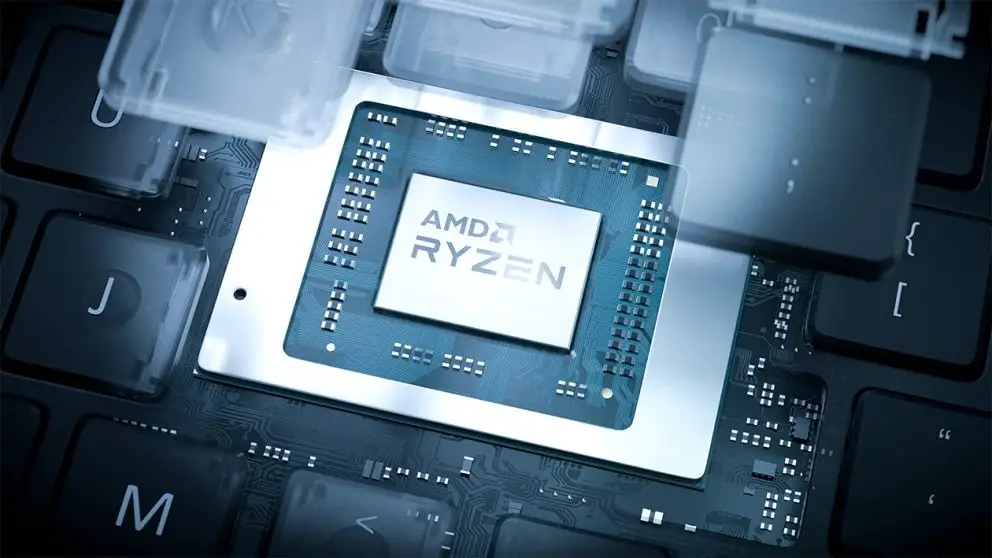Intel has just released its 12 generation CPUs, also known as Alder Lake.
In addition to the debut of technologies such as PCIe 5.0 and support for DDR5 memories, this new generation of CPUs also stands out for making use of two different types of cores: Performance (P-Cores – Golden Cove) and Efficiency (E – colors – Gracemont).
According to a video published by Moore’s Law is Dead this Thursday, November 4, AMD is preparing to take a very similar path, adopting a Big.Little style distribution for its future generations of processors (more specifically Zen 5).
The video posted by MLD deals with two topics in particular, which are the new leaks in the AMD Zen 4D and Zen 5 architectures.
ZEN 4D & ZEN 5 Leak: AMD makes big.LITTLE Cost-Effective
According to MLD, Zen 4 Dense (Zen 4D) would be a derivative of the Zen 4 architecture, restructured with an unprecedented cache system, fewer resources and reduced clocks. The goal behind this simplification is to increase chip density while reducing power consumption.
Despite losing a bit of performance for single-threaded applications, the Zen 4 Dense architecture would bring considerable leaps in multicore scenarios, as it would allow the installation of a much larger number of cores in the same area.

The first chip to use this Zen 4D architecture would be “Bergamo”, whose launch is scheduled for the second quarter (Q2) of 2023. According to sources, it would arrive with up to 16 cores per chiplet, reaching 128 cores. (8 chiplets).
16 cores per chiplet, reaching 128 colors. 😲
The leaker also cites that the number of DDR5 channels has not yet been confirmed, but that it could go up to 12. Other details of Zen 4D reportedly include the removal (total or partial) of support for AVX-512 instructions (something that also seems to have been problematic for Intel), although multi-threaded support (SMT-2) is still a possibility.
AMD’s Zen 5 architecture is being treated internally with much more enthusiasm compared to the Zen 4 architecture. That’s because it can deliver a performance jump of up to 40% over the Zen 4 architecture (with an expected minimum of 20 %).
The most curious point is that with Zen 5 AMD plans to officially enter the Big.Little concept, that is, efficiency cores plus performance cores. This idea that grew out of smartphones is making its way onto the desktop and laptop scene, and companies like Intel and Apple are already putting it into practice.
Incidentally, the MLD channel also says that the simplified Zen 4D cores will be the basis for the efficiency cores of the Zen 5 architecture. In total, the processors would come with 8 high-performance cores with Zen 5 architecture, plus 16 cores of the type 4D Zen.
According to the source, these chips are scheduled for release in late 2023 (Q3), which would leave an interval of 11-14 months between the launch of Zen 4 and Zen 5.















